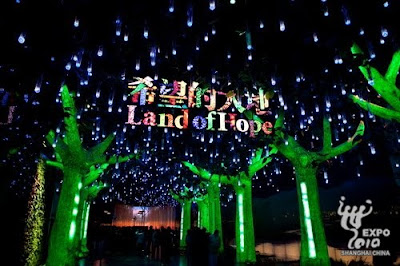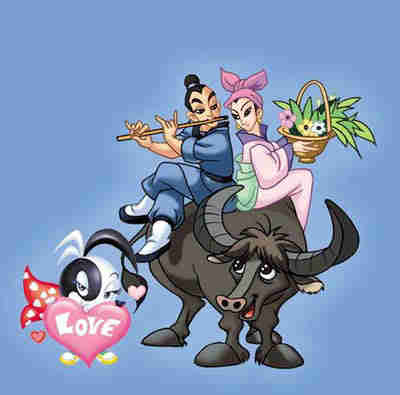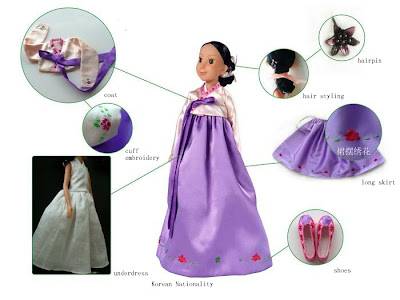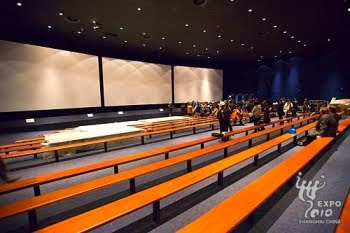Every year the day on August 15 of Chinese lunar calendar is the traditional Mid-Autumn Festival in China. At that time the season comes to mid-autumn of the year, so it is called Mid-Autumn Festival.
 Happy Mid-Autumn Festival!
Happy Mid-Autumn Festival!In China's Lunar Calendar, the year is divided into four seasons, each season is divided into three parts as ‘Meng’, ‘Zhong’ and “Ji”, so the Mid-Autumn is also known as Middle Autumn or ‘Zhong-Qiu’ pronounced in Chinese.
The moon on August 15th in Chinese lunar calendar is always more fuller and more bright than that in other months, so it is also known as "the Eve of Month", "August Festival". On this night, people looking up at the bright moon just like a fine jade, also like a disc in the sky, will naturally look forward to family reunion. Emigres far away from home will also used to express their thick homesick to their family members and hometown on the moon. Therefore, the Mid-Autumn Festival is also known as "Reunion Festival".
Since ancient times Chinese people has the custom of "Worshipping the goddess of the moon at the end of Autumn". In the Zhou dynasty, every year in the night of Mid-Autumn people will hold ceremonies of ‘Welcome Coldness’ and ‘Worship The Goddess of the Moon”, at the ceremony, a big size of incense table will settles, moon cakes, watermelons, apples, dates, plums, grapes and other offerings will placed on the table, among which, moon cakes and watermelons are necessary. And the watermelon should be cutted into lotus shape.
In the moon light, the statue of goddess of the moon will be placed toward the direction of the moon, with burning candles, the whole family will worship the moon one by one, then the housewife of the family will cut out the reunion moon cake into several parts. The number of divided moon cake parts always has been calculated before, which covers all members of the family, includes ones at home, and the members outside home. More or less is not allowed, and the size of parted moon cakes should be same.
 Moon Cakes
Moon CakesAs said in a legend that in ancient times there was an ugly girl named ‘Wu Yan”, who was accustomed to worship the goddess of the moon piously during her childhood, when she has grown up, she was been selected to enter the palace for her outstanding characters and virtues, but as for her ugly appearance she had not been favored by the emperor for a long time.
Later on the night of August 15 one year, when she worshipping the moon, the emperor seen her in the moon light and found her is very beautiful, then chose her as his queen, which is the origin of the custom of worshipping moon at the mid-autumn.
Fairy Chang-e, who is living in the moon, was known for her beauty, so young girls worship moon will willing to "look like the goddess of Chang’e, face as bright moon."
 Fairy Chang-e - The Goddess of The Moon
Fairy Chang-e - The Goddess of The MoonDuring the Tang Dynasty of ancient China, the custom of admiring and enjoying the glorious full moon on the Mid-Autumn Festival is quite popular. On the night of August 15 in Chinese lunar calendar, peoples in the whole city, no matter they are poor or rich, old or young, will all wear on adult clothing, burn incenses and worship moon and tell out their wishes, and pray for blessing of the goddess of the moon.
During the South-Song dynasty in ancient China, people were accustomed to present moon cakes to each other, as to admire the auspicious connotation of reunion. In some area there will hold many activities as playing grass weaved dragon dance, building pagodas and so on.
Since the Ming and Qing dynasty in ancient China, the custom of celebrate the Mid-Autumn festival is become more popular in folk, there formed many special customs such as burning incenses, tree mid-autumn, light pagoda lights, play sky lights, walking with the moon, playing fire dragon dance and etc. in many local areas in China.
There are many customs of the Mid-Autumn Festival in China, as well as many forms, but all of them are repose trust of people’s infinite love and yearning for a better life.
Today, the custom of playing under the month has been far from popular than which ancient times in China, but the custom of host a banquet to enjoying the full moon is still very popular in China, people are still like to drinking wines to ask after the moon, celebrate the good life, or wish distant relatives good health and happy, share the moon with family members in common.

Now, as the traditional Mid-Autumn Festival in China is coming soon(will fall on September 22), I wish all lovers each other a long life so as to share the beauty of this graceful moonlight, even though miles apart.
* Original address of this China gift post: China Gift and Fine Arts & Crafts in China

















































